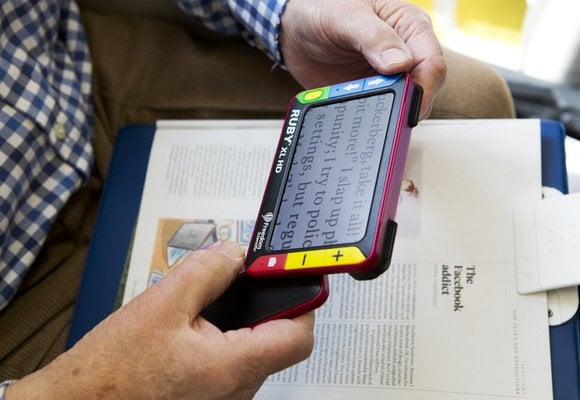Braille that is written or embossed onto paper or similar materials is still used every day.
Paper braille is often the most pleasant to read for leisure purposes and has the advantage of being low-tech and reasonably portable. It means people can label items around the home and take notes on the go. Familiarity with paper braille is also important when learning braille and for developing literacy skills in children.
Paper braille takes up considerably more space than printed words. An average book or novel will be made up of ten volumes of braille.
Reading Braille
Blind and partially sighted people read from left to right across the page with a light touch, using one or both hands. The soft pads of the fingers are used to feel the raised dots, as these are more sensitive than the fingertips.
Most sighted braille readers read braille by sight. Sensitive fingers are needed for reading braille, although even those with a less acute sense of touch are pleasantly surprised with how quickly their sensitivity increases with practice.
Braille is no longer purely a paper medium. New braille technologies are bringing about a communication revolution for blind and partially sighted people.
Special software converts text to braille and streams it through a piece of equipment used next to the keyboard called a refreshable braille display.
The display produces braille by raising and lowering pins in response to an electronic signal. As you read through different sections of text the braille display constantly updates the braille.
The braille alphabet card shows the embossed braille alphabet, punctuation marks and numbers, together with the print translation.
The braille alphabet card shows the embossed braille alphabet, punctuation marks and numbers, together with the print translation. For more information, please contact our helpline on 0303 123 9999 and quote product code: PR10223
Our National Library Service stocks a huge range of books for children and adults in a range of accessible formats, including braille.
Magazines and newspapers from RNIB cover a range of areas of interest, and are available in braille.







